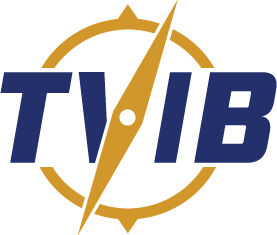USCG: Is your Automated Identification System ready for Subchapter M?
Reposted from the Coast Guard Maritime Commons
7/3/2018: Is your Automated Identification System ready for Subchapter M?
Posted by LT Amy Midgett, Tuesday, July 3, 2018
Submitted by Lt.j.g. David Turay, Coast Guard Navigation Center
A vessel’s Automatic Identification System (AIS) is crucial to the crew’s safety. AIS is a situational awareness tool that was originally intended for collision avoidance, but it has many other applications:
- SAR – Aids first responders in reaching vessels in distress.
- Vessel Traffic Service (VTS) – AIS is used by surveilled VTS systems to provide additional navigation safety in busy ports and waterways.
- Fleet Monitoring/Tracking – AIS is a cost effective way for operators to monitor their fleet activities.
- Accident Investigations – Historical AIS data is important to thorough accident investigations, which identify ways to further improve maritime safety.
AIS broadcast is autonomous and continuously exchanges real-time safety and navigation information between AIS equipped vessels within VHF range of each other. Recognizing the critical role AIS has on our nation’s maritime safety and security, the Coast Guard developed the Nationwide AIS (NAIS), which consists of an expansive network of shore-based VHF towers that receive AIS transmissions from vessels transiting U.S. waterways.
AIS Data
AIS data falls into three categories: Static, Dynamic, and Voyage-related Data.
Static Data is information that must be programmed into the AIS at installation and is verified periodically. Static Data includes: Maritime Mobile Service Identity (MMSI); vessel type; vessel name; call sign (if assigned); IMO or Official Documentation Number (if assigned); and antenna location (which is also used to provide vessel dimensions).
Dynamic Data, such as position, course, speed, heading, and rate of turn is autonomously acquired from external or internal sensors (i.e. GPS, speed log, heading device or gyro). Dynamic Data is continuously broadcast every few seconds. Proper installation and operation of all sensors is critical to the proper operation of AIS and the accuracy of the information it exchanges.
Voyage-related Data (i.e. Navigation status, static draft, destination, and estimated time of arrival) is manually entered and should always be kept up to date. Navigation status must be updated throughout the course of a voyage. Vessels underway broadcast every 2-10 seconds, whereas vessels that are moored or at anchor broadcast every 3 minutes. Moored vessels that use an underway navigation status consume significantly more NAIS bandwidth. Bandwidth and throughput are crucial factors that may affect the response times of first responders that use NAIS information. Vessels should use the correct navigation status to remain compliant with federal regulations and to ensure NAIS performs at optimal levels.
Subchapter M and AIS
During the month of June 2018, over 50 percent of towing vessels operating in U.S. waters transmitted incorrect AIS data, and an alarming number of these vessels did not accurately report their dimensions or broadcast a properly assigned MMSI number. Failure to accurately report a vessel’s dimension significantly increases the risk of collision, especially in congested waterways or during low visibility conditions. Knowing the location of the bow in addition to the overall length of the vessel and associated barges is crucial to help approaching vessels react and maneuver appropriately. This is especially important when visibility is limited.
Subchapter M regulations bring numerous new requirements to the towing community. Vessel operators will be required to adhere to these new regulations in addition to the existing regulation for all AIS users, the AIS Carriage Requirement found in 33 CFR 164.46d(2). It requires vessel AIS to be maintained in effective operating conditions, which includes the broadcast of a properly assigned MMSI and all other AIS data fields.
AIS is a valuable navigation safety radio communication tool. However, its effectiveness is undermined by the broadcast of inaccurate, improper or outdated data. The deliberate broadcast of inaccurate AIS data may subject violators to monetary penalties by the Coast Guard, and operators may also be subject to significant penalties by the FCC for each violation of improper or inaccurate MMSI broadcast. Fortunately, the AIS carriage requirement is one of the easiest regulations to meet before scheduling vessel inspections.
Guidance and Verification
To assist AIS users, the Coast Guard has promulgated a two-page AIS Encoding Guide. The Navigation Center is also the home of the Vessel Information Verification Service (VIVS), a web-based self-help tool that allows users to check their vessel’s AIS data. VIVS search results will highlight any suspected AIS static data discrepancies. Towing vessel operators can then use this information to make any necessary corrections before scheduling vessel inspections.
